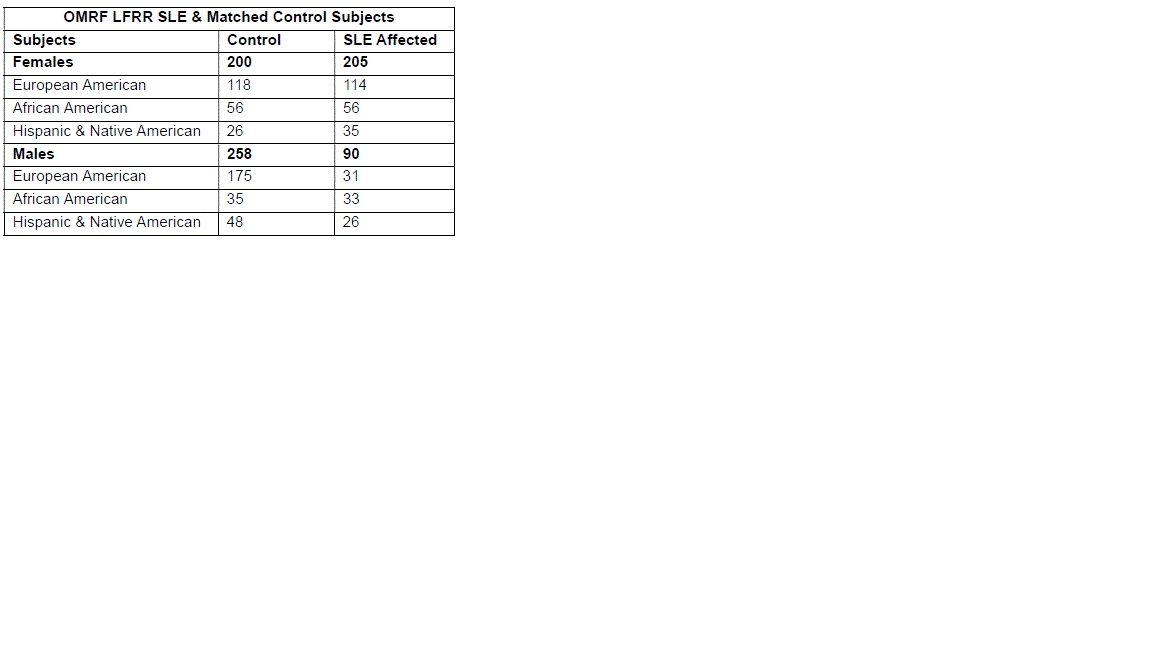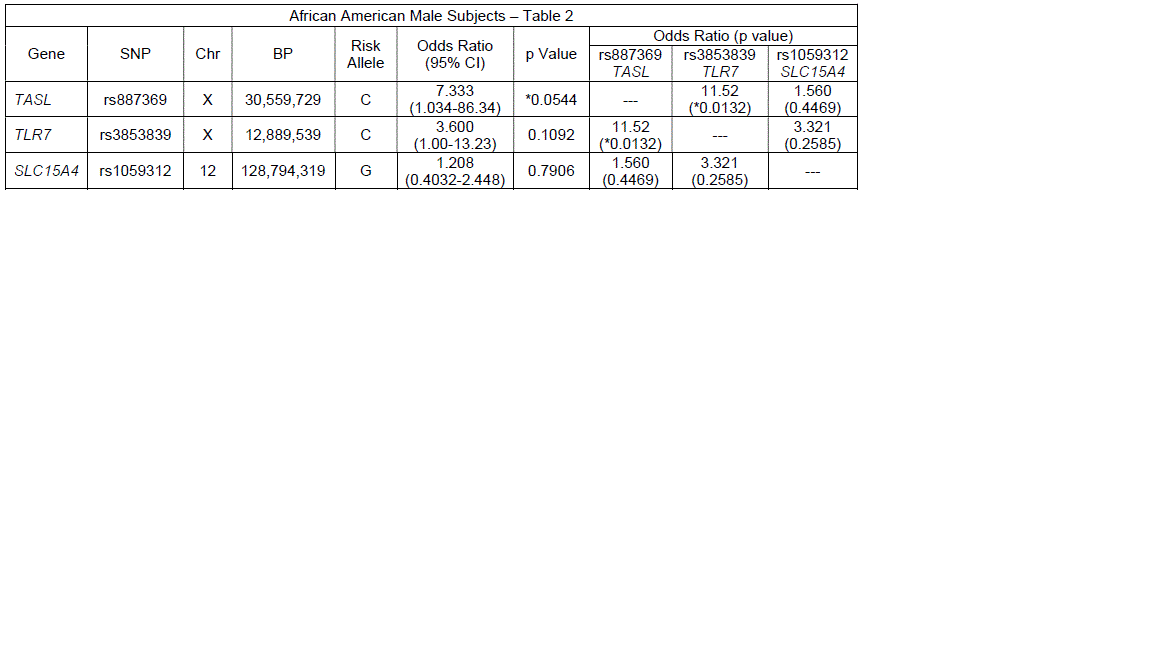Session Information
Date: Saturday, November 16, 2024
Title: Abstracts: SLE – Diagnosis, Manifestations, & Outcomes I: Omics
Session Type: Abstract Session
Session Time: 1:00PM-2:30PM
Background/Purpose: Systemic Lupus Erythematosus (SLE) is a chronic inflammatory autoimmune disease that mostly
has it onset among women between the ages 15–44. While the global pathogenic mechanisms that contribute to
SLE remains incompletely known, it is generally accepted that environmental exposures on a genetically
susceptible individual can result in dysregulated innate and adaptive immune responses, eventually leading to the
disease. TASL, TLR7, and SLC15A4 all have SLE associated risk alleles in the form of single nucleotide
polymorphisms (SNPs). Indeed, their protein products coalesce at the endolysosome and play a regulatory role in
the production of Type I interferons (IFNs-I). Upon IFN-I production, inflammation rapidly ensues to promote a
positive feed-forward loop that further signals TASL and TLR7 gene expression. Since TASL, SLC15A4, and
TLR7 appear to work in cooperative manner, we conducted SNP genotyping to assess genetic synergism using
three SLE risk-associated SNPs.
Methods: We obtained genomic DNA from the Oklahoma Lupus Family Repository and Registry (LFRR) for SLE
subects and matched controls (See Table 1). We used the Roche 480 Lightcycler to genotype TASL (rs887369),
SLC15A4 (rs1059312), and TLR7 (rs3853839) using TaqMan probes following the manufacturer’s protocols. We
organized the data based on the presence of homozygous risk SNP, heterozygous risk SNP, or homozygous nonrisk
SNP. Statistics were calculated using GraphPad Prism contingency table format employing Fisher’s exact
test.
Results: We found that African American men had a 7.333% (p=0.0544) odds ratio for the risk allele of rs887369
(TASL). When both the risk alleles for TASL rs887369 and TLR7 rs3853839 SNPs were present in African-
American males, there was an odds ratio of 11.52 (p=0.0132). In the African-American women, there was a
3.959 odds ratio (p=0.0189) when TASL rs887369 and SLC15A4 rs1059312 risk alleles were present.
Conclusion: Our data demonstrate that among African-Americans the risk of SLE was markedly increased by
presence of multiple risk alleles in these genes that are involved in interferon production through the TLR7
pathway. These results suggest a synergistic effect for SLE risk among these genes, at least among African
Americans. The increased prevalence of the disease in this population may be, at least in part, mediated by this
synergistic effect among these risk alleles. Although some European-Americans and Hispanic-Americans had the
risk allele present, it did not affect the SLE risk.
To cite this abstract in AMA style:
Bruxvoort C, Porter F, Cavett J, Ice J, Bilal B, Scofield R, Lewis V. Investigating TASL, SLC15A4, & TLR7 Associated Risk SNPs in Systemic Lupus Erythematosus [abstract]. Arthritis Rheumatol. 2024; 76 (suppl 9). https://acrabstracts.org/abstract/investigating-tasl-slc15a4-tlr7-associated-risk-snps-in-systemic-lupus-erythematosus/. Accessed .« Back to ACR Convergence 2024
ACR Meeting Abstracts - https://acrabstracts.org/abstract/investigating-tasl-slc15a4-tlr7-associated-risk-snps-in-systemic-lupus-erythematosus/



